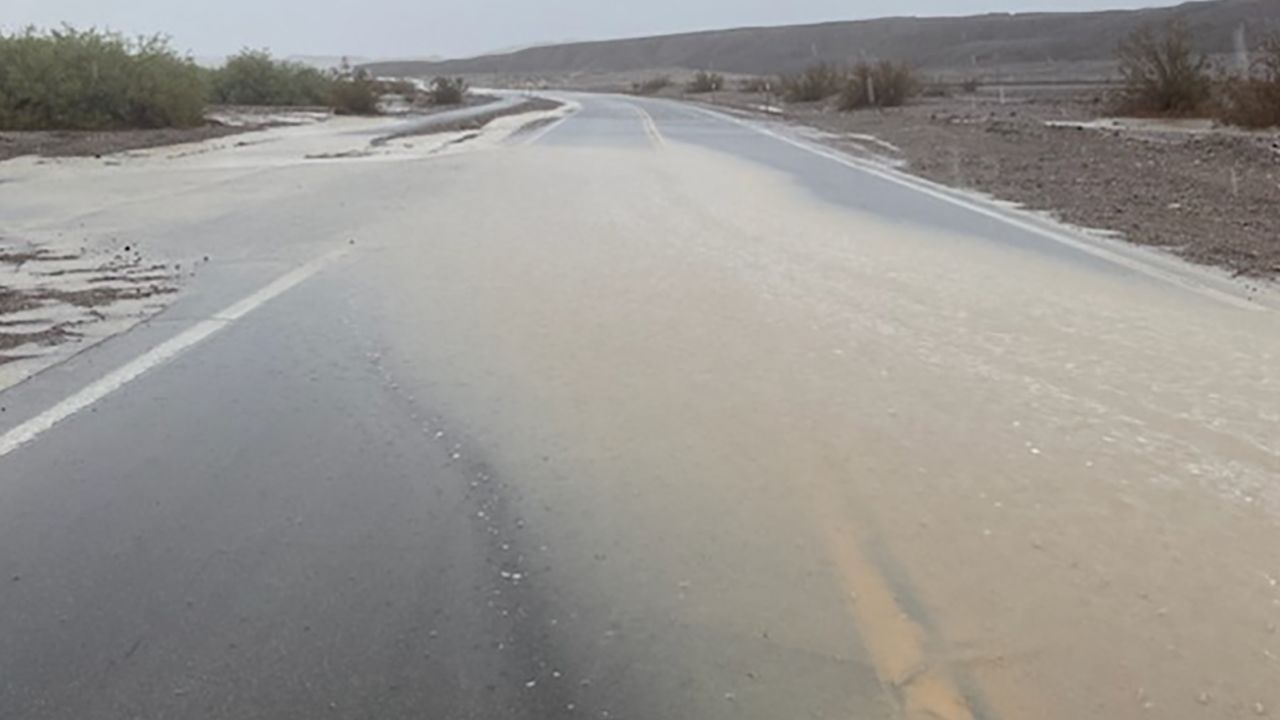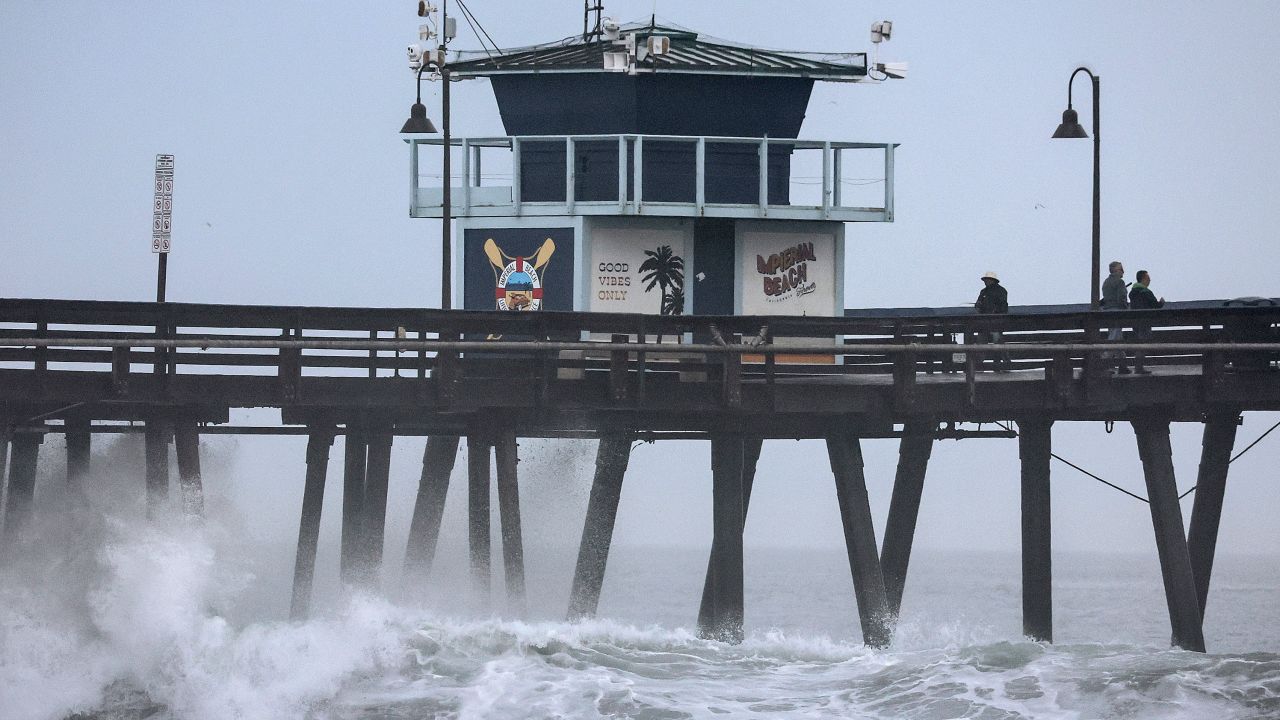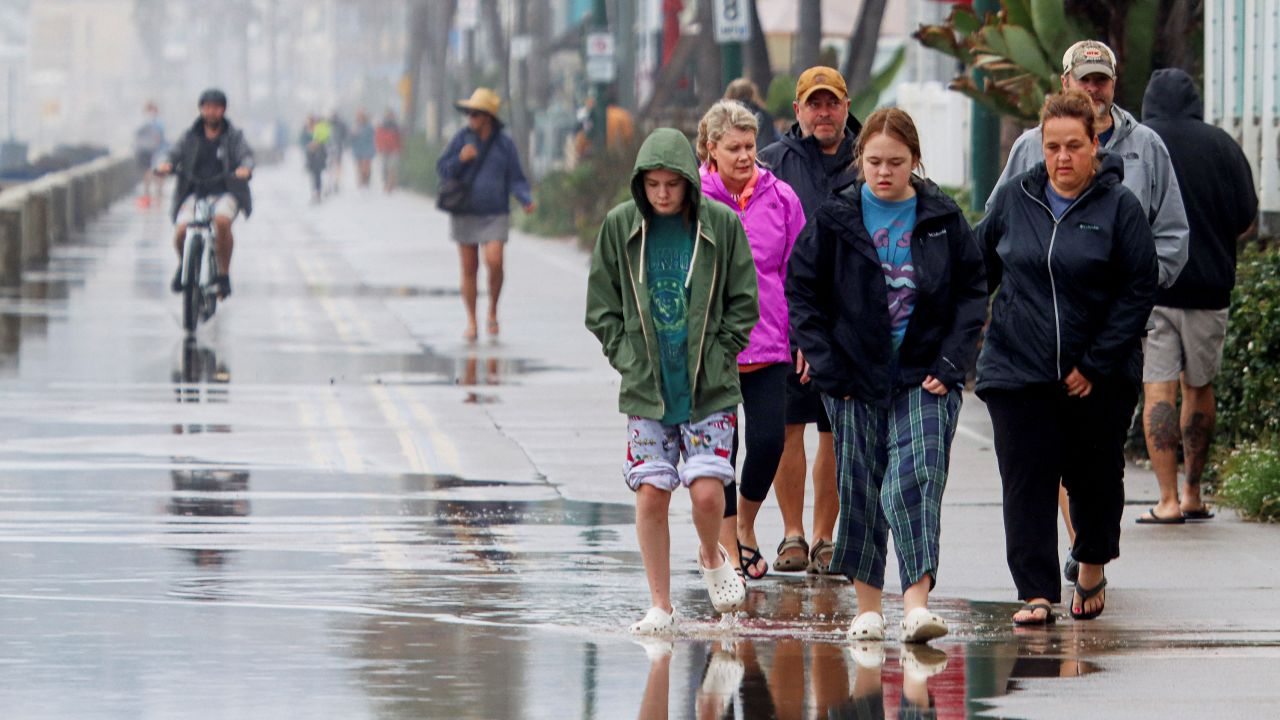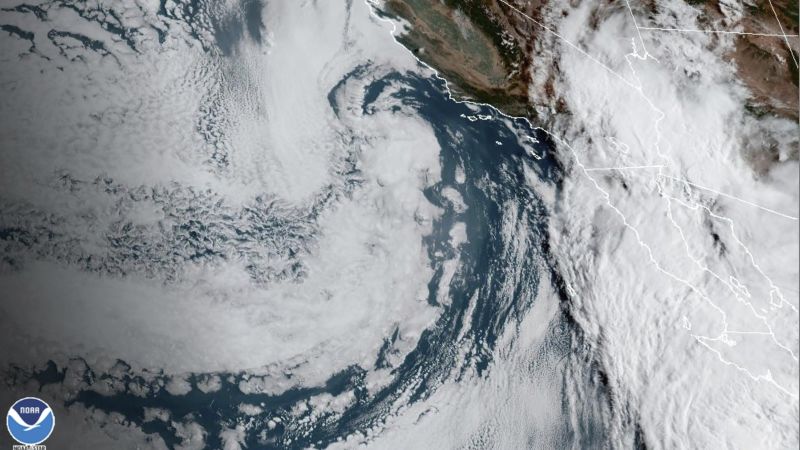Table of Contents
CNN
—
After making landfall in Mexico earlier Sunday, Tropical Storm Hilary is now unleashing vicious wind gusts and heavy rain across California, where officials have warned of catastrophic and potentially deadly floods.
Hilary’s core – in other words, its center – is just a few hours from Southern California, but the state has been feeling the storm’s effects since early Sunday and the rainfall totals are starting to add up.
“We are not used to this level of precipitation, generally. Certainly not in the middle of summer,” San Diego Mayor Todd Gloria told CNN’s Jim Acosta Sunday afternoon, saying he was worried about potential power outages from the wind as well as flooding. “We’re not built for this kind of rainfall.”
“With what we’re expecting, it may overwhelm us,” he added.
Live updates: Tropical Storm Hilary to bring major flooding risk to California
Hilary had maximum sustained winds of 60 mph at roughly 2 p.m. local time and was about 115 miles south-southeast of San Diego, the National Hurricane Center said.
Things will only get worse as the storm moves further into the US.
One California official has warned Hilary could be among the most devastating storms to hit the state in recent years. In Arizona, authorities issued evacuation orders in parts of Lake Mead National Park urging residents to seek higher ground ahead of potential floods. And Nevada’s governor declared a state of emergency Sunday as the storm drew closer.
More than than 1,000 flights within, into or out of the US have been canceled Sunday and more than 3,600 have been delayed. The three most-impacted airports are all in Hilary’s range: Harry Reid International Airport in Nevada, San Diego International Airport and Phoenix Sky Harbor International Airport, according to flightaware.com.
And as Hilary triggered flood warnings across Los Angeles, a magnitude 5.1 earthquake shook the area and other parts of Southern California Sunday afternoon, according to the United States Geological Survey.
As Hilary’s center approaches, more than 9 million people, including those in downtown Los Angeles, are under a flash flood warning expected to last through the late evening. Parts of Los Angeles and Ventura counties could see up to 1.5 inches of rain dumped per hour, the National Weather Service said. Winds have gusted as high as 84 mph in the mountains near San Diego.
Hilary weakened from a Category 1 hurricane to a tropical storm before it made landfall over the northern Baja California Peninsula early Sunday.
At least one death is already attributed to the storm. A person died when their vehicle was swept away near Santa Rosalía in Mexico, along the Baja California Peninsula, Mexican officials said in a news release Saturday.
In the southwestern US, Hilary is forecast to unleash a “potentially historic amount of rainfall” that could cause “life-threatening to locally catastrophic” flooding, the hurricane center said. The storm is forecast to dump 3 to 6 inches of rain – or even 10 inches in some areas – and whip up damaging winds that can knock power out for many.
In Palmdale, roughly 50 miles north of Los Angeles, officials cleared a mudslide from a highway and urged residents to avoid traveling, warning of a high risk for more slides and floods.
California Gov. Gavin Newsom proclaimed a state of emergency Saturday for a large swath of Southern California to support hurricane response and recovery efforts.
In a Saturday news conference, Nancy Ward, director of the California Governor’s Office of Emergency Services, warned Hilary “could be one of the most devastating storms that we’ve had hit California in more than a decade.”
Parts of California, Nevada and Arizona that are unaccustomed to rain could suddenly receive a year’s worth or more. And along the coast, large swells generated by Hilary are likely to create life-threatening surf and rip current conditions.
Death Valley saw triple its average August rainfall in just a few hours Sunday morning. Nearly a month’s worth of rain fell in one hour on Sunday. It normally receives an average of 0.21 inches of rain the entire month of August, but the Furnace Creek observation site reported 0.63 inches since Sunday morning.
Roads within Death Valley National Park were expected to eventually become “impassable,” the park said on Instagram, sharing photos that showed floodwaters flowing over roads.

The threat triggered California’s first ever tropical storm warning extending from the state’s southern border to just north of Los Angeles – presenting an “unprecedented weather event” to a city with “deep experience” responding to natural disasters like wildfires and earthquakes, Mayor Karen Bass said at a news conference.
“It is critical that Angelenos stay safe and stay home unless otherwise directed by safety officials,” Bass said. “Avoid unnecessary travel. If you do not need to be on the road, please don’t get in your car. Make sure your emergency kit and essential devices are on hand. And ensure that all of your devices are charged in the event of life-threatening emergency.”
Residents of the San Bernardino County communities of Oak Glen, Forest Falls, Mountain Home Village, Angelus Oaks, and Northeast Yucaipa were all ordered to evacuate Saturday.
Visitors and some residents of Catalina Island, part of California’s Channel Islands, were “strongly encouraged” to leave the island ahead of the storm in a news release from the City of Avalon.
Meanwhile, helicopters from the Los Angeles County Sheriff’s Office were flying over riverbed areas Saturday afternoon, making announcements in both English and Spanish to warn homeless people about the extreme weather.
On top of the threats of heavy rainfall and swollen surf, Hilary also brings with it the threat of isolated tornadoes Sunday from mid-morning through the evening over parts of the lower Colorado River Valley, Mojave Desert and Imperial Valley regions, according to the hurricane center.

Concern for deserts and recent burn areas
California has been particularly focused on preparing residents in areas that typically receive the least rain, or that were most recently scorched by wildfires, authorities said.
“We’re keeping a very close eye on our desert regions, east of San Diego and Los Angeles. Some parts of these areas may receive double their yearly amount of water in just a single day,” said Brian Ferguson, the deputy director of the California Governor’s Office of Emergency Services.
Lingering burn scars from wildfires can create a steep, slick surface for water and debris to flow off. People who live downhill and downstream from burned areas are very susceptible to flash flooding and debris flows.
“Rainfall that would normally be absorbed will run off extremely quickly after a wildfire, as burned soil can be as water repellant as pavement,” the National Weather Service said.
In Orange County, a voluntary evacuation warning was issued for Silverado Canyon and Williams Canyon in the Bond Fire burn area due to possible debris flows along or near the burn scar.
Residents have been offered sandbags to fortify their property in counties across Southern California, where some of the natural buffers against flooding have been burned away.

State and local officials ready to respond
First responders have also been pre-positioned to respond quickly and perform water rescues from flooded areas, Newsom’s office indicated, with “more than 7,500 boots on the ground” deployed.
The Los Angeles Department of Water and Power has fully staffed crews ready to work on restoring power and clearing downed trees or power lines, the utility said in a statement. The city’s reservoirs have “sufficient capacity” to handle any increased runoff due to potential flooding, it added.
Electricity utility Southern California Edison – which serves more than 15 million people in the region – said Thursday Hilary is on track to impact much of its service area. The company said it is preparing to respond to outages but urged residents to gather supplies including flashlights, external battery chargers and ice chests.
The approaching storm has already led to disruptions across California: All state beaches in Orange and San Diego counties were closed; the US Navy is temporarily relocating San Diego-based ships and submarines; Los Angeles County closed parks, beaches, playgrounds, restrooms and trails; Major League Baseball overhauled its weekend schedule; and Sunday’s My Morning Jacket and Fleet Foxes concert at the Hollywood Bowl has been postponed.




